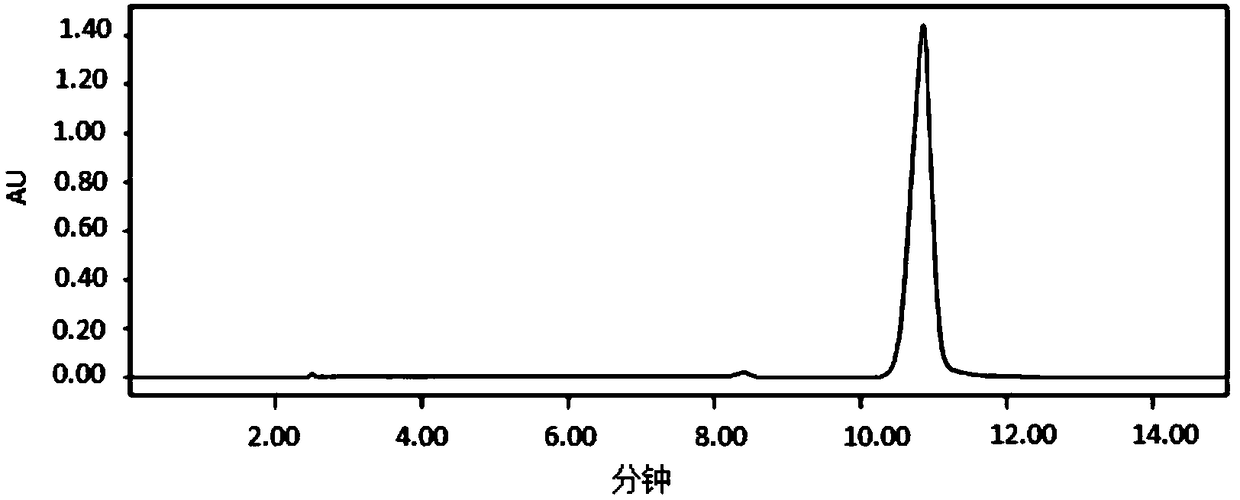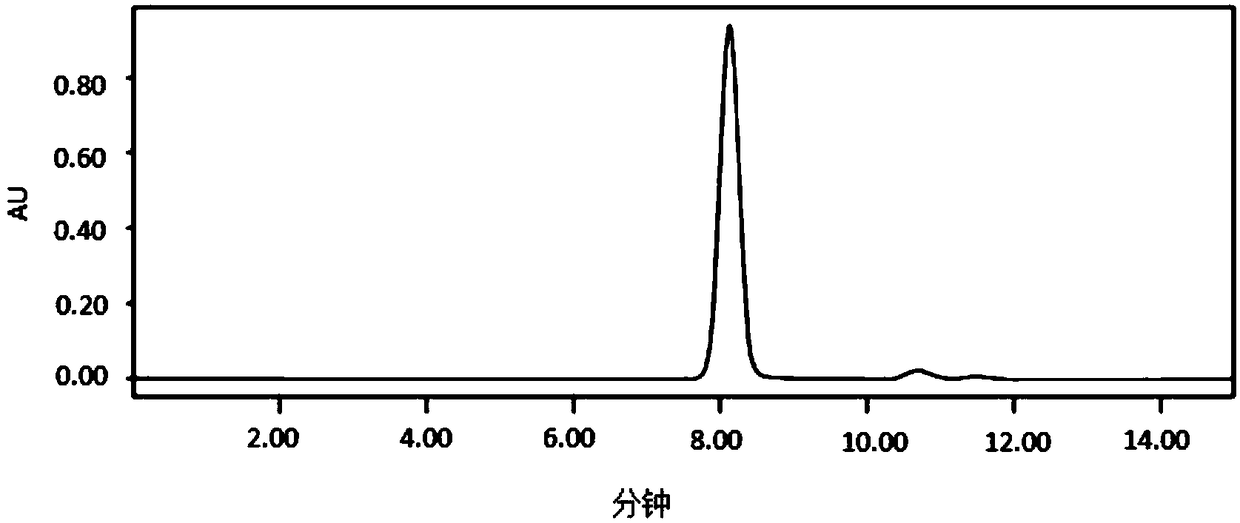Green separation technique for preparing magnolol and honokiol monomer from mangnolia officinalis raw material
A honokiol and separation technology, which is applied in the field of green separation of magnolol and honokiol monomers, can solve the problems of difficulty in realizing industrialized large-scale production, high production costs, and cumbersome steps, and achieve the solution of solvent Residue, high yield, good safety effect
- Summary
- Abstract
- Description
- Claims
- Application Information
AI Technical Summary
Problems solved by technology
Method used
Image
Examples
Embodiment 1
[0024] 1. Get 100g of Magnolia officinalis raw material, and described Magnolia officinalis raw material can be Magnolia officinalis leaf powder specifically, detect wherein total phenol content is 14.49% through HPLC, wherein magnolol 7.83%, honokiol 6.66%;
[0025] 2. Magnolia officinalis raw materials were reflux extracted three times with ethanol solution of 7 times the amount, 6 times the amount and 4 times the amount of its mass respectively, the volume concentration of the ethanol solution was 75%, the extraction temperature was 70 ° C, each reflux extraction was 0.5h, combined All the extracts are recovered from ethanol at 35°C and concentrated to 14 degrees Baume. The concentration process can be concentrated by centrifugal film to obtain 20.35g of Magnolia officinalis extract. The total phenol content of Magnolia bark is detected by HPLC 63.75 %, of which magnolol 32.21%, honokiol 31.54%;
[0026] 3. Add 7 times its mass of an alkaline solution with a pH of 10 to the...
Embodiment 2
[0029] 1. Get 100g of Magnolia officinalis raw material, and described Magnolia officinalis raw material can be Magnolia officinalis leaf powder specifically, detect wherein total phenol content is 13.31% through HPLC, wherein magnolol 5.28%, honokiol 8.03%;
[0030] 2. Magnolia officinalis raw materials were reflux extracted three times with ethanol solution of 7 times, 6 times and 4 times of its mass respectively, the volume concentration of the ethanol solution was 85%, the extraction temperature was 80°C, each time refluxed and extracted for 1.5h, combined All the extracts were recovered from ethanol at 40°C and concentrated to 16 degrees Baume. This concentration process was concentrated by centrifugal film to obtain 19.8g of Magnolia officinalis extract. Parkol 23.81%, honokiol 35.53%;
[0031] 3. Add 9 times the mass of an alkaline solution with a pH of 11 to the magnolia bark extract extract, specifically sodium hydroxide solution, stir for 1.5 hours, leave to separate...
Embodiment 3
[0034] 1. Get 100g of Magnolia officinalis raw material, and described Magnolia officinalis raw material can be Magnolia officinalis leaf powder specifically, detect wherein total phenol content is 15.62% through HPLC, wherein magnolol 10.38%, honokiol 5.24%;
[0035] 2. Magnolia officinalis raw materials were reflux extracted three times with the ethanol solution of 7 times the amount, 6 times the amount and 4 times the amount of the mass respectively, the volume concentration of the ethanol solution was 80%, the extraction temperature was 75 ° C, and each time the reflux was extracted for 1 hour, and all were combined. Extract solution, reclaim ethanol under the condition of 38 ℃ and concentrate to 15 degrees Baume, this concentration process adopts centrifuge film to concentrate, obtains Magnolia officinalis extract extractum 22.5g, and HPLC detects that the total phenol content of Magnolia officinalis is 68.32%, wherein Magnolia officinalis phenol 45.79%, honokiol 22.53%; ...
PUM
 Login to View More
Login to View More Abstract
Description
Claims
Application Information
 Login to View More
Login to View More - R&D
- Intellectual Property
- Life Sciences
- Materials
- Tech Scout
- Unparalleled Data Quality
- Higher Quality Content
- 60% Fewer Hallucinations
Browse by: Latest US Patents, China's latest patents, Technical Efficacy Thesaurus, Application Domain, Technology Topic, Popular Technical Reports.
© 2025 PatSnap. All rights reserved.Legal|Privacy policy|Modern Slavery Act Transparency Statement|Sitemap|About US| Contact US: help@patsnap.com



